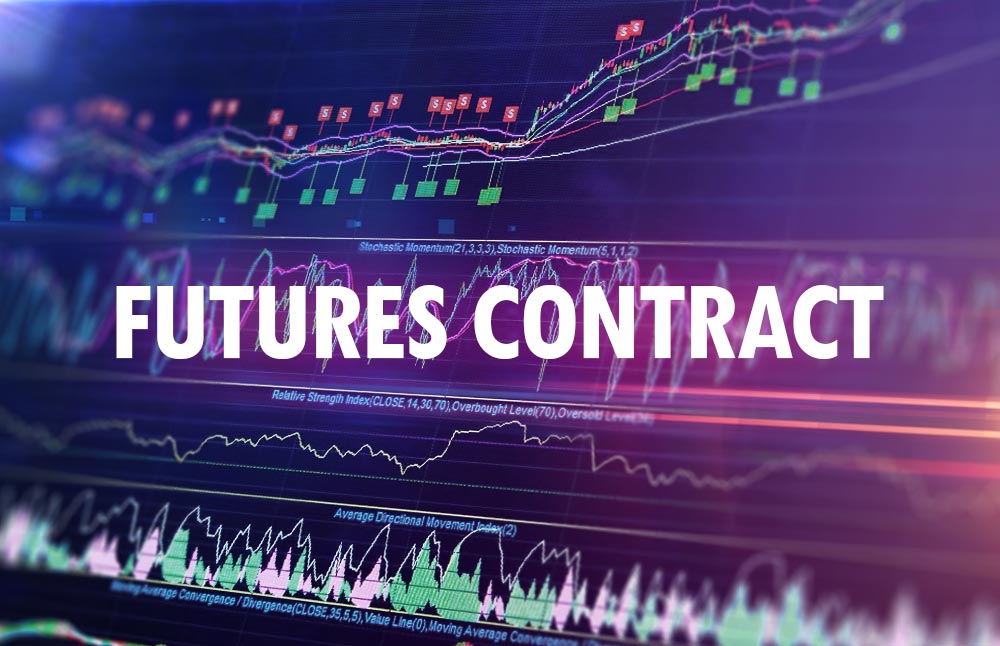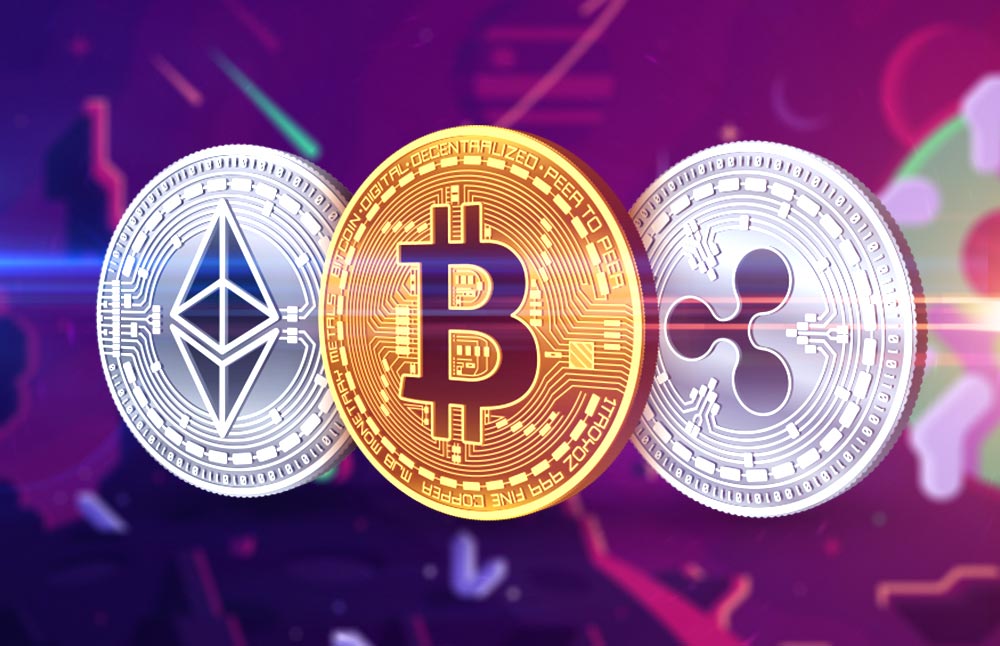Bitcoin Futures Guide: Best Exchanges + How Trading Works

What Are Bitcoin Futures? How Do Bitcoin Futures Work? What Are the Best Bitcoin Futures Exchanges?
Bitcoin futures are alive and well in 2019. On an average day, investors exchange over $5 billion in bitcoin futures contracts.
But what exactly are bitcoin futures? How do bitcoin futures work? How can I start trading bitcoin futures?
Today, we’re explaining everything you need to know about bitcoin futures trading.
What is a Futures Contract?
A futures contract allows the investor to buy or sell an asset at a certain price on a certain date set at some point in the future. Investors in bitcoin can trade futures contracts in futures marketplaces.
Traditionally, the most active futures markets have involved gold, oil, or various commodities.
The futures contract itself contains details of the asset class being traded. The contract also lists the purchase size, final trading day, maturity date, and the exchange on which the contract is being bought or sold.
Because the futures contract is linked to the value of the asset, the underlying value of the futures contract for a particular instrument is priced according to the actual asset itself.
How Does Futures Trading Work?

A futures trade involves two parties. One party goes long on an asset class while the other goes short. While we have covered in great detail the bitcoin chart analysis, learning how to trade bitcoin futures is a different category to understand as a whole.
The futures contract is created based on demand: the contract is not automatically offered in the marketplace. A futures contract is created when a buyer is matched with a seller.
A short position is used to secure a sell price now in order to protect someone – like a hedger – against declining prices in the future. The short position wins if the price continues to fall.
A long position is used to secure a buy price now to take advantage of rising prices in the future. The long position wins if prices continue to rise.
With both of these positions, the trader has locked into the contract at a specific price point.
Futures contracts start as an agreement between two parties, although the contract will likely change hands multiple times before the contract expires.
When the futures contract expires, the settlement can be either physical (in the case of commodities) or via a cash settlement (in the case of most bitcoin futures exchanges).
When a futures contract is physically settled, the goods are delivered at the agreed-upon price. Typically, futures contracts are used by investors to hedge physical exposure to a particular instrument, or by speculators, neither of whom are looking for physical delivery of the asset.
When a futures contract is cash-settled (also known as financially settled), no physical exchange of goods takes place; instead, an equivalent amount of cash is exchanged. The contract is settled by taking the difference between the price of the contract at the time it was purchased and the price at settlement.
Bitcoin futures trading takes a similar approach. Cash-settled bitcoin futures let traders gain exposure and/or hedge their exposure to the crypto asset without actually having to manage their private keys or create a crypto account to buy bitcoin. Physically-settled bitcoin futures, like the product offered by Bakkt, require physical storage of Bitcoin.
Futures Contracts in Practice

In practice, futures contracts are most often used by hedgers and speculators. An airline might hedge itself against rising oil prices, for example, while a speculator might buy bitcoin futures contracts today anticipating a rise in bitcoin prices moving forward.
Hedgers can go either long or short. A short position is taken to secure a price now to protect the hedger from declining prices in the future, while a long position protects against rising prices in the future.
Speculators go short when they expect prices to fall in the future. They go long when they expect prices will rise in the future.
All airlines, for example, protect themselves against fluctuations in oil prices by buying futures contracts. The airline will buy a futures contract for crude oil today. That contract will have a specified price and delivery date in the future. This insulates the airline from the cost fluctuations of crude oil: the airline is affected by the cost fluctuations of crude oil as a physical commodity, but it has protected itself in the futures market.
A speculator, meanwhile, might buy a bitcoin futures contract today. That futures contract guarantees that the speculator can buy bitcoin one year from now at a price of $8,000. If the price of bitcoin rises to $15,000 by the contract’s expiry, then the speculator has made a significant amount of money. If the price of bitcoin drops to $5,000 by the contract’s expiry, then the speculator has lost money.
Or, let’s consider the case of a bitcoin miner. A bitcoin miner, for example, might sell bitcoin futures as a hedge against price volatility. The bitcoin miner is like a soybean farmer trading soybean futures: the miner will ‘harvest’ BTC at some point and want to sell it. To hedge against the risk of bitcoin’s price falling, the miner could lock into a specific price of BTC for a specific future date.
History of Futures Markets

Futures markets aren’t new; the first futures market, called the Dojima Rice Exchange, was launched in Japan in 1710. Traders would buy or sell futures contracts based on the price of rice.
Some argue that the London Metal Exchange operated similarly back in the 16th century. Others point to the Hammurabi Code from 1750 BC that allowed the sales of goods and assets to be delivered of ran agreed price at a future date.
In any case, futures markets have been around for a while. Bitcoin futures trading, however, is extremely new.
History of Bitcoin Futures

The first bitcoin futures markets launched in December 2017. Officially, Cboe Futures Exchange, LLC (CFE) was the first to list bitcoin futures. The organization’s cross-town competitor, however, CME Group, was the first to announce the launch of bitcoin futures trading, although they didn’t launch their exchange until December 17.
Today, Cboe and CME are the two largest and best-regulated bitcoin futures exchanges, although plenty of other competitors have emerged.
Why did we need bitcoin futures exchanges? Well, just like in commodity markets, investors needed a way to hedge.
Prior to the launch of bitcoin futures trading, miners faced an unknown future and fixed operating costs. Miners were mining bitcoin and holding bitcoin, then spending money on utility bills and operating expenses, but they weren’t sure how much their bitcoin was ultimately going to be worth. Just like airlines, miners needed a way to hedge their bets. That’s why we need bitcoin futures contracts.
Although Cboe and CME Group are the two largest and best-known bitcoin futures exchanges, they’re not the only players in the game.
One bitcoin futures trading exchange traces its history back to 2011. OrderBook.net launched in 2011 (originally known as iCBIT). The exchange lasted until around 2016. At its peak, OrderBook.net sold millions of futures contracts each month. OrderBook.net has since shut down.
More recently, TD Ameritrade has entered the bitcoin futures trading space, for example. Anyone with a TD Ameritrade account can actively trade bitcoin futures. TD Ameritrade offers bitcoin futures trading, although you’ll need to meet certain requirements to qualify (as a minimum account balance of $25,000).
Today, we have dozens of major crypto futures trading platforms. Most of the best-regulated institutional platforms continue to focus on bitcoin and USD futures contracts. However, many other providers now offer futures trading in Ether (ETH), Litecoin (LTC), Bitcoin Cash (BCH), and Ripple (XRP).
Kraken, for example, offers all of the following crypto futures contract pairs: BTC/USD, ETH/USD, LTC/USD, BCH/USD, XRP/USD, and XRP/BTC.
Meanwhile, two unregulated marketplaces, OKEx and BitMEX, each have average daily volumes exceeding $1 billion on average, making them the two largest bitcoin futures exchanges available today.
Three Main Reasons to Trade Crypto Futures

There are three main reasons why a company, an investor, or an institution would trade bitcoin futures:
Hedge Price Risk: Investors holding digital assets can mitigate the risk of a falling price by simultaneously taking a short future position on the asset in question. If the price falls, the short position will mitigate losses by providing additional revenue.
Speculate on Market Direction: Cryptocurrency futures trading allows investors to speculate on whether prices will go up or down. If you believe the price of bitcoin is about to sharply increase, or example, then you can go extra long on bitcoin futures to multiply your returns. If you believe ETH is about to plummet, then you can short ETH futures.
Stabilize Price Fluctuations: Airlines stabilize oil price fluctuations by buying crude oil futures. Some do the same with bitcoin futures. A miner with expected bitcoin flows or an ATM operator with inventory to manage, for example, might smoothen exposure to price fluctuations using bitcoin futures.
Generally, most bitcoin futures traders fall into one of the categories above.
Leverage and Crypto Futures Trading

Leverage plays a crucial role in futures trading. You’ll see many futures exchanges advertise how much leverage they offer. CME and Cboe offer leverage of 3x to 5x, on average, while unregulated exchanges offer leverage of 20x to 100x.
Futures are extremely capital efficient, which means less money is required to open positions than if you were spot trading (1x) or margin trading (3 to 5x).
That’s why many bitcoin futures marketplaces – like Kraken – let you leverage your position up to 50x over, assuming you have sufficient collateral.
Let’s say you have 10 BTC and are scared of declining prices. With spot trading, you need to trust 100% of your money to the spot exchange to sell. With a margin exchange, you’d need to trust 20%. With 50x crypto futures like we see on Kraken, you can trust as low as 2% of your money on the exchange.
Because crypto futures use collateral as low as 2% of the notional amount, crypto futures allow you to take positions with up to 50x leverage, giving traders the flexibility to position themselves in the market while maintaining lower exchange risk than they would have on spot or margin trading platforms.
The Best Bitcoin Futures Exchanges Available Today
Today, Cboe and CME remain the two largest and best-regulated bitcoin futures marketplaces in the world.
Other competitors have also entered the market. You can now trade crypto futures on well-regulated crypto exchanges like Kraken, for example. You can also trade futures on unregulated crypto exchanges like Deribit, BitMEX, and OKCoin.
Chicago Board of Exchange (Cboe)

Cboe was the first regulated marketplace to launch bitcoin futures trading. The company beat its crosstown competitor, CME Group, to launch, even though CME Group announced its futures trading weeks earlier. Key features of bitcoin futures trading on Cboe include:
- Listing Date: December 10, 2017
- Ticker Symbol: XBT
- Contract Unit: Equal to 1 BTC
- Description: Cash-settled futures contracts based on the Gemini Exchange auction price for bitcoin in USD.
- Pricing: USD
- Settlement: The final settlement value will be the auction price for bitcoin in USD determined at 4 pm EST on the final settlement date by the Gemini Exchange.
- Trading Hours: 830am to 315pm Monday to Friday
- Margin Rates: 40%
- Clearing: Options Clearing Corporation
- Contract Expirations: Weekly, monthly, quarterly
Chicago Mercantile Exchange (CME) Group

The Chicago Mercantile Exchange (CME) Group launched its bitcoin futures trading marketplace just a week after Cboe. Today, the platform functions in a similar way to Cboe’s offering, although there are small differences between the two options.
- Listing Date: December 17, 2017
- Ticker Symbol: BTC
- Contract Unit: Equal to 5 BTC
- Description: Cash-settled based on the CME CF Bitcoin Reference Rate (BRR), which serves as a once-a-day reference rate of the USD price of bitcoin.
- Pricing: USD
- Settlement: The contract is priced using the CME CF BRR, which has been built around the IOSCO Principles for Financial Benchmarks. BRR takes data from Bitstamp, Coinbase, itBit, and Kraken to calculate pricing.
- Trading Hours: Sunday to Friday from 6pm to 5 pm, with one-hour break at 5pm.
- Margin Rates: 35%
- Clearing: CME ClearPort
- Contract Expirations: Every two months
TD Ameritrade

TD Ameritrade recently launched bitcoin futures trading to qualifying users. Anyone with a TD Ameritrade account who meets the qualifications can start trading bitcoin futures from directly within their accounts. TD Ameritrade has partnered with CME Group to offer bitcoin futures trading: you’re trading through your TD Ameritrade account, although all trades are placed over the CME Group marketplace.
To qualify for TD Ameritrade bitcoin futures trading, your account needs to meet the following qualifications:
- Margin enabled
- Tier 2 spread option approval
- Advanced features enabled
- Futures trading approval
- Account minimum of $25,000
TD Ameritrade’s requirement for trading bitcoin futures is 1.5 times higher than exchange margin requirements. Once approved, you’re ready to start trading bitcoin futures immediately.
Kraken

Kraken has one of the most robust crypto trading platforms available today. Kraken lets you trade a variety of cryptocurrencies in multiple pairs. Key features of Kraken’s crypto futures trading marketplace include:
- Multiple Currency Pairs: BTC/USD, ETH/USD, LTC/USD, BCH/USD, XRP/USD, and XRP/BTC.
- Leverage: Up to 50x leverage (available across all pairs)
- Timeframe: Perpetual, monthly, and quarterly (only perpetual and quarterly timeframes available for XRP/BTC)
- Contract Size: 1 USD (1 XRP for the XRP/BTC pair)
- Collateral: BTC, ETH, LTC, BCH, or XRP
- Type: Inverse (Vanilla for XRP/BTC pair)
- Fees: 0.075% taker, 0.02% maker
- Settlement: Profit from trading is instantly settled and available. Contracts mature at the expiration date and the open interest is cash-settled in the collateral asset.
One of the biggest advantages of trading crypto futures with Kraken is that you can leverage up to 50x across all pairs.
Bakkt

Bakkt is the newest entrant to the crypto futures trading space. Bakkt is a crypto startup launched by Intercontinental Exchange (ICE), the same company behind the New York Stock Exchange (NYSE). Originally announced in 2018, Bakkt’s launch date was pushed back over a year.
Finally, Bakkt launched in September 2019 with its first product: a bitcoin futures contract aimed at institutional investors who want to make bets on the future price of bitcoin.
One of the biggest differences between Bakkt and its competitors is that Bakkt’s futures contracts are physically settled in ‘real’ bitcoin. Unlike traditional futures contracts on other exchanges, which are simply derivatives of bitcoin, Bakkt uses physical bitcoin.
Other key features of Bakkt include:
- Custody: Unlike any other crypto futures marketplace, Bakkt stores physical bitcoin. The company has invested significantly in state-of-the-art physical and cybersecurity, ultimately allowing it to create an institutional-grade custody service suitable for retail and institutional investors alike.
- Same Technology as ICE and NYSE: Bakkt may be the most secure crypto exchange available. The exchange is built on the same technology that powers major international exchanges like the ICE and the NYSE.
- Physically Delivered Contracts: Unlike all other crypto futures exchanges listed here, Bakkt uses physically-delivered bitcoin futures contracts. Instead of just trading derivatives of bitcoin and settling in cash, Bakkt users settle contracts in real bitcoin.
- Compliant: Bakkt is built for compliance from the ground up. Users must complete KYC and AML verification. Bakkt also has on-chain analytics and surveillance for all crypto deposits and withdrawals. Overall, Bakkt is positioning itself as a safe and regulated trading environment.
Today, Bakkt only offers physically-settled BTC/USD futures contracts. Moving forward, however, Bakkt plans to launch additional pairs and offerings.
Interactive Brokers

Interactive Brokers lets you buy long contracts with a 50% margin requirement, which is the best in the market. Although Interactive Brokers charges slightly higher fees than the competition, the platform also accepts a range of different currencies. Plus, Interactive Brokers lets you buy futures contracts on either Cboe or CME.
Key features of Interactive Brokers include:
- Accepted currencies: USD, EUR, GBP, AUD, and CAD
- Deposit Methods: Bank wires, ACH, BPay, EFT, checks
- Fees: $5 fee on CBOE, $10 on CME
The main downside of Interactive Brokers is that shorts need to provide excess margin, which means you need to control more than the nominal value to open a short, removing much of the incentive for a trader to open a short in the first place. The other downside of Interactive Brokers is the high fees of $5 to $10.
TradeStation

TradeStation has some of the cheapest fees in the bitcoin futures trading industry. The main drawback of TradeStation is that you need to put down 66% of your position’s nominal value as a margin requirement, which defeats some of the benefits of futures contract trading.
TradeStation does, however, offer access to both the CME and Cboe bitcoin futures trading markets, and the $1.50 fees are very cheap.
E Trade

E Trade is an American trading giant that recently started offering bitcoin futures contracts to customers through the Optionshouse trading platform. Users can trade both CME and Cboe contracts with an 80% margin required. Trades are collateralized in USD.
E Trade also has reasonable (if slightly high) fees of $2.50.
CryptoFacilities

CryptoFacilities is licensed and regulated by the United Kingdom’s Financial Conduct Authority (FCA), giving it an extra layer of authority over BitMEX, Deribit, and some of the unregulated providers on this list.
CryptoFacilities also has a competitive fee structure for bitcoin futures trades, including $0 maker fees and taker fees as low as 0.0008. One of the unusual things about CryptoFacilities is that the platform only accepts crypto for deposits. However, users are accepted from anywhere in the world (except for the United States and sanctioned countries.
Key features of CryptoFacilities include:
- Trading Hours: 24/7
- Timeframes: Perpetual, monthly, and quarterly
- Leverage: Up to 50x
- Crypto Pairs: BTC, ETH, XRP, LTC, and BCH
One of the major advantages of CryptoFacilities is that it offers Ripple (XRP) markets. Trades in the XRP/USD and XRP/BTC pair can be collateralized in XRP itself. This feature makes CryptoFacilities are particularly popular option for investors holding large amounts of Ripple.
BitMEX

BitMEX is an unregulated crypto futures trading marketplace with few rules but lots of liquidity. It’s one of the world’s largest crypto futures marketplaces, dwarfing its better-regulated competitors like Cboe and CME Group. On an average day, BitMEX will see over $2 billion of crypto trades in a 24 hour period.
BitMEX charges a maker fee of 0.025% and a taker fee of 0.075%.
One of the biggest advantages of BitMEX is that the exchange offers leverage up to 100X, much higher than any competitors listed here. Traders can set leverage anywhere from 1 to 100 based on their aversion to risk.
Other key features of BitMEX include:
- Trading Hours: 24/7
- Timeframes: Perpetual, quarterly, and bi-quartlery
- Expiry: Last Friday of the contract month at 8 pm EST
- Leverage: 1x to 100x
- Crypto Pairs: ADA, BCH, EOS, ETH, LTC, TRON, and XRP
- Banned Countries: United States, Canada, Cuba, Crimea, Iran, Syria, and North Korea
- Volume: $2 to $4 billion in daily trading volume (2019)
BitMEX uses a 50/50 split between Coinbase and Bitstamp as its underlying bitcoin price index, giving the exchange an extra layer of legitimacy.
OKCoin / OKEx

OKEx is the international arm of the OKCoin exchange, which was founded in 2013. The exchange is registered in Malta but run from Hong Kong, catering mostly to traders in China and other Asian countries.
Today, people tend to use OKCoin and OKEx interchangeably. Whatever you call it, OKCoin/OKEx is frequently the largest bitcoin futures trading marketplace on the internet, although it’s occasionally beat by BitMEX. OKCoin is particularly popular among Asia-based crypto futures traders.
OKCoin offers leverage up to 20X on three different cryptocurrencies. It also offers low fees. Users can go through two different levels of verification based on how much they want to trade and how they want to withdraw their money.
Key features of OKEx include:
- Trading Hours: 24/7
- Timeframes: Weekly, Bi-Weekly, and Quarterly
- Expiry: Friday at noon of the expiration week
- Leverage: 10x to 20x
- Crypto Pairs: ETH, ETC, BCH, XRP, EOS, and BTG
- Volume: $1.5 to $3 billion per day (2019)
- Banned Countries: United States, Hong Kong, Cuba, Iran, North Korea, Crimea, Sudan, Malaysia, Syria, Bangladesh, Bolivia, Ecuador, and Kyrgyzstan
Overall, OKCoin offers strong liquidity from an exchange with a less-than-transparent history. Like BitMEX, there are some concerns over dealing with an unregulated exchange. However, OKCoin continues to be popular among Asia-based crypto traders wanting to access futures contracts.
Deribit

Deribit is the newest bitcoin futures contract competitor for BitMEX and OKEx. The Netherlands-based exchange specializes in crypto futures trading.
Key features of Deribit include:
- Trading Hours: 24/7
- Leverage: Up to 100x
- Timeframes: Perpetual and quarterly
- Crypto Pairs: BTC and ETH
How Do Bitcoin Futures Affect Bitcoin Trading?
There’s some debate over how bitcoin futures affect bitcoin trading. When bitcoin futures trading was first announced in late 2017, the markets went crazy with anticipation. Long-term bitcoin hodlers saw this as a sign that bitcoin was becoming mainstream. They thought trillions of dollars of institutional capital was about to pour into bitcoin.
Within a week of the launch of the first regulated bitcoin futures trading market, the price of bitcoin went up to its all-time high of $20,000. The price crashed soon after and remains at around $9,000 today.
So how do futures markets affect bitcoin – if at all? Are futures markets good or bad for the world’s largest cryptocurrency?
The answer is complicated.
The general theory argues that the ‘smart’ institutional money will pour into the futures market, and that other markets will follow. We saw this with the initial launch of bitcoin futures. Bitcoin futures prices rose. The market, taking note of the higher futures market prices, followed, causing the market price of bitcoin to rise. People began looking to futures markets as a guide to the future direction of bitcoin – similar to how commodity, oil, and gold futures markets work.
Increased appetite for lower bitcoin prices could see the value of bitcoin futures contracts drop, likely leading to a decline in the price of bitcoin itself.
We see a similar effect on traditional markets. Daily movements in the Dow mini and the S&P 500 futures markets, for example, have a material impact on the direction of the main indexes each day.
Futures markets don’t always control the underlying market, however. News that occurs during the market’s trading hours, for example, can disrupt the trajectory that we were starting to see with futures markets. Which as a noble sidenote, it may be worth learning how to earn bitcoin as an alternative to trading bitcoin futures.
FAQs About Bitcoin Futures Contracts
We get a lot of questions about bitcoin futures contracts. Below, we’re answering some of the most common questions we receive:
Q: How are bitcoin futures contracts related to the underlying market price or spot market of bitcoin?
A: Bitcoin futures marketplaces draw prices from existing crypto exchanges. CME, for example, uses its CME CF Bitcoin Reference Rate (BRR), which draws price data from several major exchanges. This price is used to settle all bitcoin futures contracts.
Q: How are bitcoin futures marketplaces regulated?
A: Bitcoin futures marketplaces in the United States are regulated by the Commodity Futures Trading Commission (CFTC), which is the regulatory body with exclusive jurisdiction over American bitcoin futures markets. Overseas, other regulatory agencies perform similar roles. Some bitcoin futures marketplaces aren’t regulated by any government body.
Q: Do I need a digital wallet to trade bitcoin futures?
A: You do not need a digital wallet to trade bitcoin futures when the futures are cash settled or financially settled (as is the case with CME, Cboe, and most other bitcoin futures exchanges). However, you will need a digital wallet (or at least a brokerage account) if dealing with physically-settled bitcoin futures – like with Bakkt.
Q: Why are Americans banned from certain unregulated futures exchanges?
A: Many of the unregulated futures exchanges above have banned Americans. Exchanges do this to avoid liability issues. Futures trading in America is regulated by the CFTC, and unregulated exchanges are offering services that break CFTC regulations. Getting regulated for each American user is complicated, so most exchanges just ban American users entirely.
Q: How old are bitcoin futures?
A: Regulated bitcoin futures first launched in December 2017 with Cboe and the CME Group. Bitcoin futures, however, date as far back as 2011 on unregulated marketplaces.
Q: What is shorting?
A: Shorting is the practice of placing a short bet without having to first borrow the underlying security. When shorting an asset, you are taking a position that the price will go down.
Q: What is hedging?
A: Hedging is the practice of taking a position on one asset to offset your position in another. Because futures contracts allow for leverage, it’s easy to hedge your position regardless of the number of physical assets you hold.
Q: What is margin?
A: Margin is the amount of money a trader must initially deposit as collateral when taking a futures position. For many heavily-traded contracts, margin amounts are less than 10% of the underlying contract. Regulated exchanges, including the CME Group and Cboe, require margin of 35% to 40%.
Final Word: What’s the Future of Bitcoin Futures Trading?
Bitcoin futures trading activity continued to be strong throughout 2019. CME Group reported an average of about $300 million to $500 million worth of bitcoin futures per day throughout 2019.
CME also claims that bitcoin futures are gaining interest among big investors. Plus, when checking futures trading volume on unregulated exchanges, we see volume of more than $4 billion per day on many days.
Clearly, bitcoin futures trading plays a crucial role in the crypto ecosystem – and it’s not going away anytime soon.

I’m Aziz, a seasoned cryptocurrency trader who’s really passionate about 2 things; #1) the awesome-revolutionary blockchain technology underlying crypto and #2) helping make bitcoin great ‘again’!
The post Bitcoin Futures Guide: Best Exchanges + How Trading Works appeared first on Master The Crypto.






